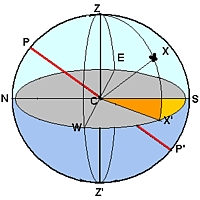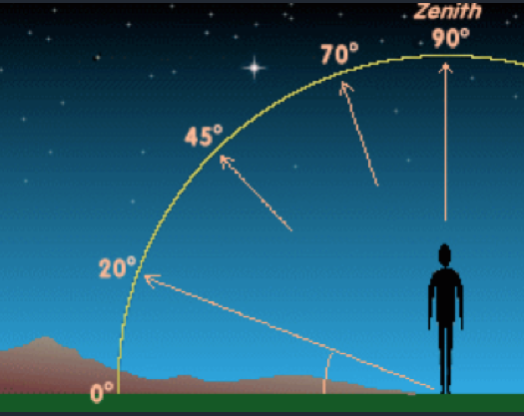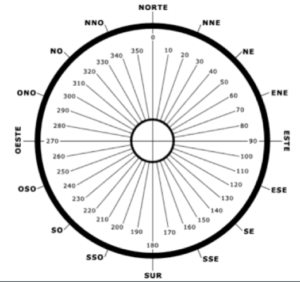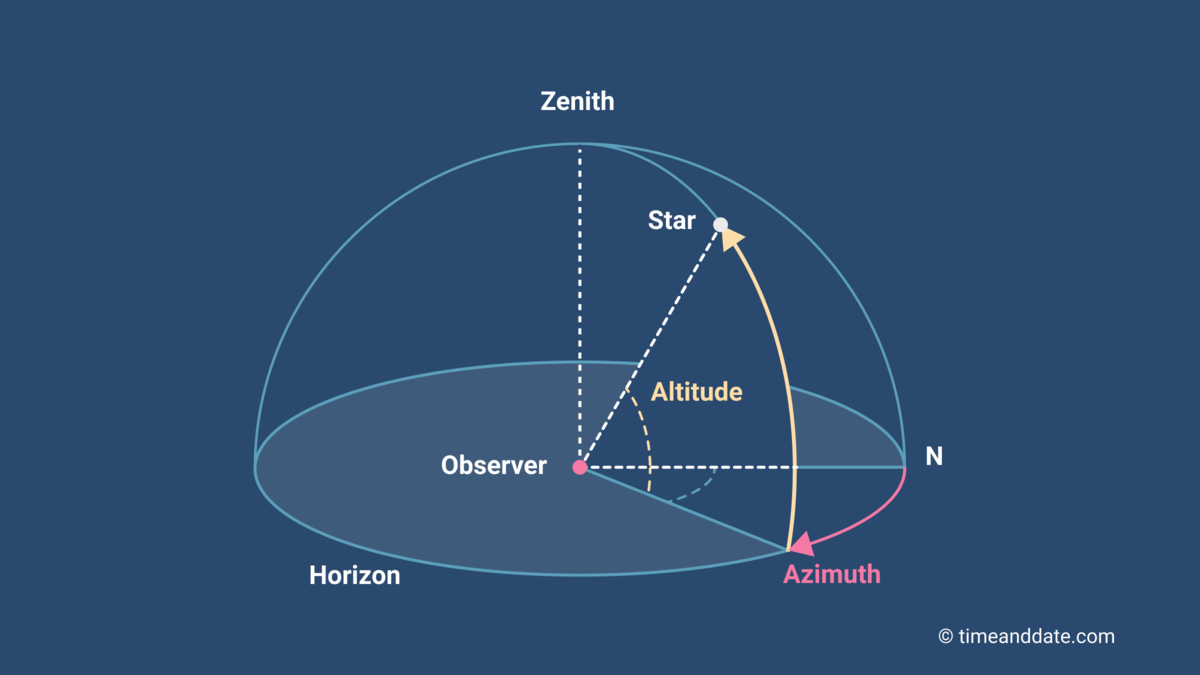The amateur practices observational astronomy by recording data in detail. To do this, it is essential to know how to scrutinize the sky, using basic notions of celestial orientation. It is necessary to keep track of the observations and, if possible, also a graphic record (drawings or photographs). It is not essential to have a telescope or binoculars, although many people use them for their observations. Observation is preferably practiced in dark places and far from light pollution, such as the desert or the countryside, but your backyard can also be your home!operations center«! The basic notions of celestial orientation to consider are:
Horizontal coordinates.
These are a first coordinate system, in relation to the observer's horizon and its vertical. That is, they depend entirely on the observer, since they will not be the same for those located at different points on the Earth; Here they especially highlight the azimuth and the height, which are measured in degrees. Compare the lateral graph with its respective explanation in the table you see below.
Where:

| c It is a point on the earth's surface where the OBSERVER is located. | Is he LIGHTWEIGHT POLE corresponding to the hemisphere where the observer is | P' It is the CELESTIAL POLE corresponding to the hemisphere opposite to the observer |
| N,S,E,W They are the cardinal points NORTH, SOUTH, EAST and WEST. | Z It is the ZENIT, the point exactly above the observer's head (90º) | Z' It is the NADIR, the point opposite the zenith below the observer's feet. |
| x It is an ASTROany located in the celestial vault | C.X. It is the DIRECTION from the observer towards the star | CX' It is the PROJECTION of this direction in the plane of the horizon |
| Angle XCX'/ Arc XX' It is the HEIGHT of the star, that is, the vertical arc counted from the horizon to the star. | SCX' angle It is the AZIMUT of the star, that is, the angle above the horizon formed by the south cardinal point and the vertical projection of the star above the horizon (CX') |
Height and azimuth in context
Based on the following images, let's imagine that by means of height, we will section the sky at 90°, starting from a horizon (0º), with the zenith as the highest point (90º). Meanwhile, through the azimuth, we section the horizons into 360º, assuming the set as a circle that will be equivalent to 0º to N, 90º to E, 180º to S and 270º to W.


When associating the height and azimuth to an arc (section of a circle), we divide the degrees that compose them into minutes and seconds of arc, the parts that make up their most basic units to section the sky, where:
1º (degree) = 60' (minutes of arc) > 1' = 60'' (seconds of arc)1º (degree) = 60' (minutes of arc) > 1' = 60'' (seconds of arc)


